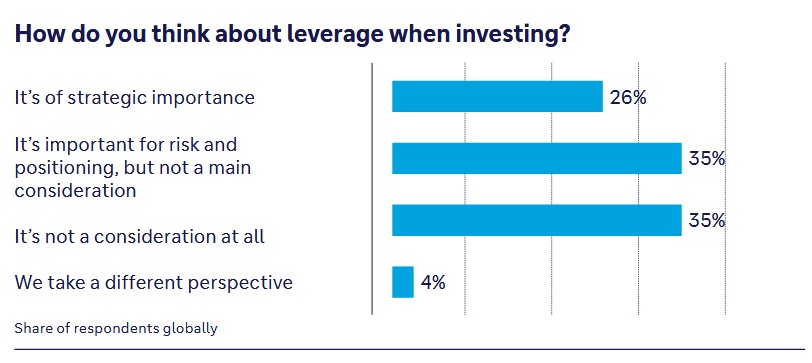Family Office
Credit Lines, War Chests And Liquidity: How Family Offices Are Positioning – Deutsche Bank Study

A study from the German bank into the investment habits of family offices worldwide delves into attitudes about borrowing money to finance investment, how they amass resources to exploit long-term asset shifts, and their approach to liquidity.
Family offices are increasingly becoming more institutional in
how they invest, use leverage and are building “war chests” to
capture opportunities when asset prices fall, a new study from
Deutsche Bank
says.
Illiquid assets form a core part of portfolios, are being
leveraged more often, while most family offices engage in private
credit and expect high returns, the Family Office Financing
Report 2025, based on views of 209 family offices globally,
has found. Survey work was conducted between 9 May and 14 July.
The 44-page study said around 35 per cent of respondents were
responsible for portfolios with more than $1 billion, and a
further 27 per cent sat in the $250 million to $1 billion
range.
The study kicked off by examining how family offices use credit
and lending facilities – an obvious point for Germany’s largest
bank to raise.
“Family offices around the world regard leverage as an important
tool, and they’re using it for a variety of purposes. Sixty-one
per cent of those we surveyed said that it was either a strategic
topic 'discussed by the investment committee and directly
affecting risk and return targets’ or 'an important topic for
risk and positioning’,” the report said.

Source: Deutsche Bank
There are regional variations. The report found that Hong
Kong-based family offices were most favourable towards leverage,
with three-quarters of respondents reporting that it’s either a
strategic or important topic. A third of UK-based family offices
consider access to leverage very important, taking centre stage
in investment decisions, with another 55 per cent saying it’s
`good to have, but not vital’. The latter is also true for family
offices in the US and Switzerland, where nearly a quarter of
respondents also consider it to be very important.
For other family offices, borrowing to invest is less ingrained.
In Germany, for example, 51 per cent said leverage was not a
consideration when investing, and only a tiny minority there
regarded it as a core strategic practice. One in five respondents
globally said they did not borrow at all.
Building firepower
On a separate but related theme of “war chests,” the report
said family offices are preparing themselves to rebalance and
manage their leverage when certain asset prices fall. “This also
allows them to seize potential distressed asset opportunities
that may arise, while also enabling them to support their
businesses should other credit lines come under pressure,” it
said.
“Many family offices are committed to holding majority positions
in operating companies, listed and unlisted. As trade barriers
and inflation have increased globally, they have also often been
required to put more liquidity into their corporates,” it
said.
Such a finding chimes with anecdotal evidence picked up by this
news service, for example, from its recent meeting with
bankers and wealth managers in Hong Kong; the disruption to
supply chains after Covid and the US “Liberation Day” tariffs,
along with other forces such as AI, have prompted many HNW and
ultra-HNW business owners to recapitalise their firms. This is
proving a significant conversation point for clients and their
bankers.
In other findings, the report said that most family offices are
engaged in private credit and expect high returns. Most
expect returns of 10 per cent or more.
Liquidity
The report examined different attitudes towards liquidity.
The average portfolio managed by survey respondents was 57 per
cent illiquid, with most respondents leveraging such
assets. Those with more illiquid portfolios tended to do this
more often – almost two-thirds of those leveraging illiquid
assets had highly illiquid portfolios (75 per cent illiquid or
more).
Liquidity levels did vary across regions. In developed markets,
the portfolios of those surveyed tended to be more illiquid
compared with those in emerging markets – in the UK and Germany,
for example, portfolios were 67 per cent and 61 per cent illiquid
respectively, while in APAC the equivalent figure was only 39 per
cent.
“Family offices generally look at their asset allocation first in
terms of liquid versus illiquid assets, and then in corresponding
sub-asset classes,” Arjun Nagarkatti, head of the private bank
for US & Europe International, said. Although illiquid assets
may, by their nature, be difficult to sell quickly, “you have
less daily observed price volatility, so you’re not beholden to
daily market moves,” he said. “Whether you’re investing in a
sports team, an artwork or a stake in a private company, prudent
long-term debt can make sense – as long as you’re not too
aggressive.”